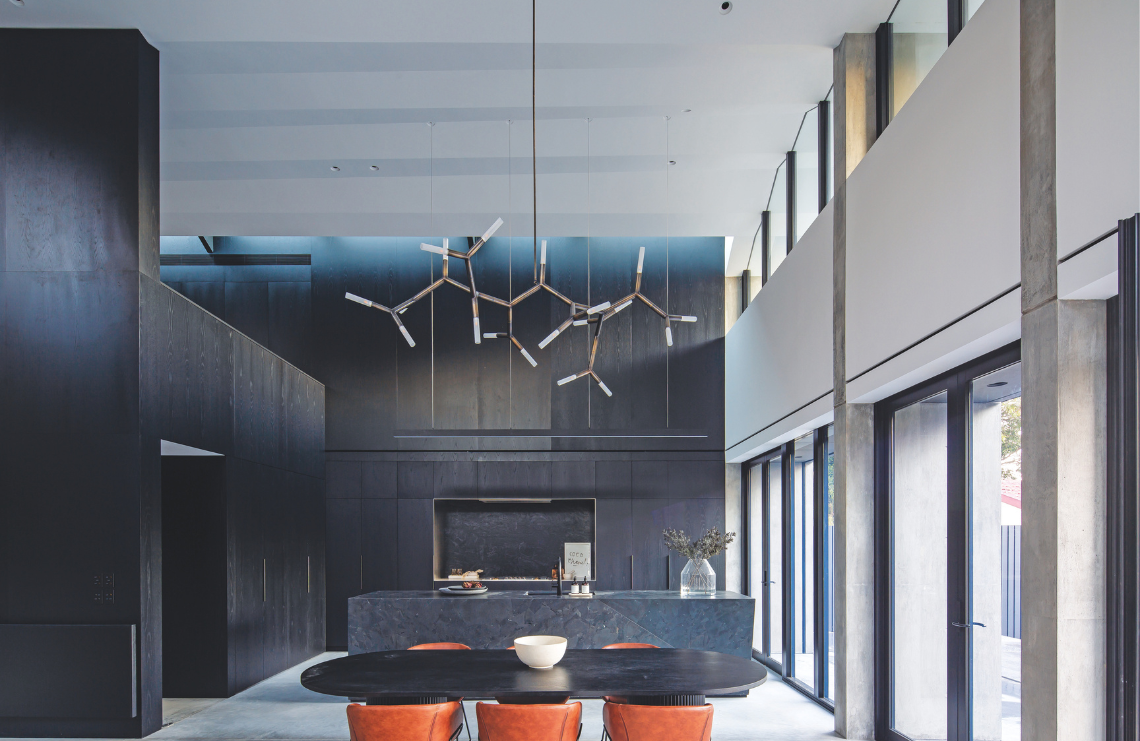A concertina pleated roofline and playful ‘jetty’ extending into the rear yard are among many of the striking features woven into the fabric of this remarkable Federation style house.
The existing Federation-style house, with a rear addition, stood among its contemporaries in the tree-lined suburban street. Daniel Stukel Beasly, director of Stukel Architecture, says the homeowners sought an adventurous and daring design that would make a big visual impact. “They wanted something that was bold and atypical to the other surrounding cottages in the neighbourhood while retaining the original house,” says Daniel.
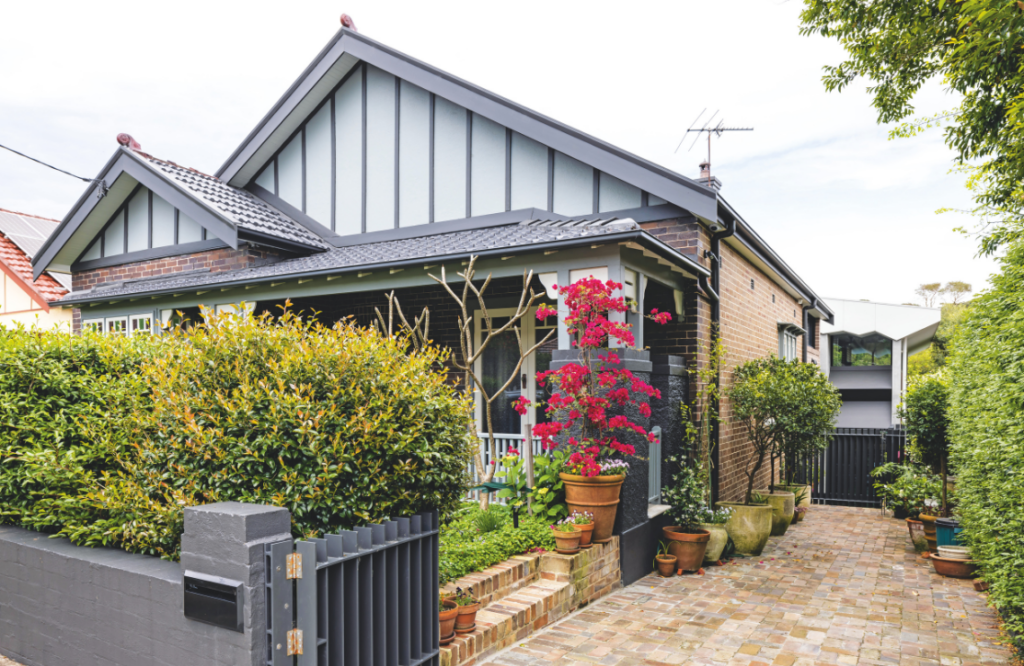
A Seamless Fusion of Old and New
The homeowners wanted a home for retirement and had a clear vision of what they were after: open-plan living spaces, a seamless connection to the outdoors, and a ceiling that was a showstopper. “The team worked hard to conceptualise and deliver an exceptional result,” says Daniel. Indeed, it is a design triumph, with a soaring ceiling and captivating shapes to ponder.
The team removed the existing rear extension and created a large open-plan kitchen, living, and dining space, along with a powder room integrated with an internal laundry. The first floor features three bedrooms, including an ensuite, dressing room, main bathroom, and study. A grand staircase with a commanding presence connects the old and new parts of the home, serving as a focal point.
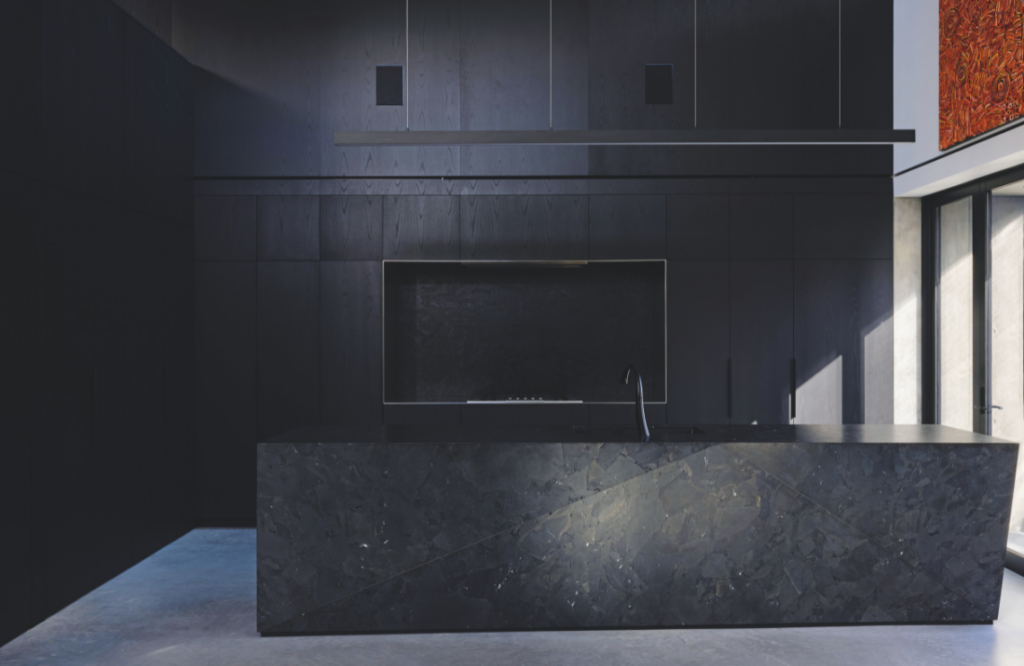
Innovative Materials and Construction Techniques
One of the most ambitious aspects was the roofline. There was much to consider in terms of design, structural elements, and then delivering the final vision in built form. “This was achieved by slicing up the 3D model to prepare computer numeric controlled (CNC) cut plywood ribs, to guide the ceiling tracks and ultimately the ceiling lining,” explains Daniel.
“Materials and construction methods were pushed to their limits, with the lining requiring a subtle twist.”
The interiors are handsome; a mixture of materials creates interesting forms, with many used in surprising ways, transforming ordinary materials into extraordinary ones. One example was the use of conventional plasterboard. “By taping and setting it, we created an unrecognisable homogenous sculptural surface,” enthuses Daniel. “This gives the materiality of the ceiling and roof a puzzling ambiguity.”
Other feature materials include crown-cut oak timber veneer in the staircase handrail and kitchen cabinetry, and the Oregon concrete walling in which you see different grain patterns of the timber. The project pays testament to exceptional craftsmanship and good design in so many ways.
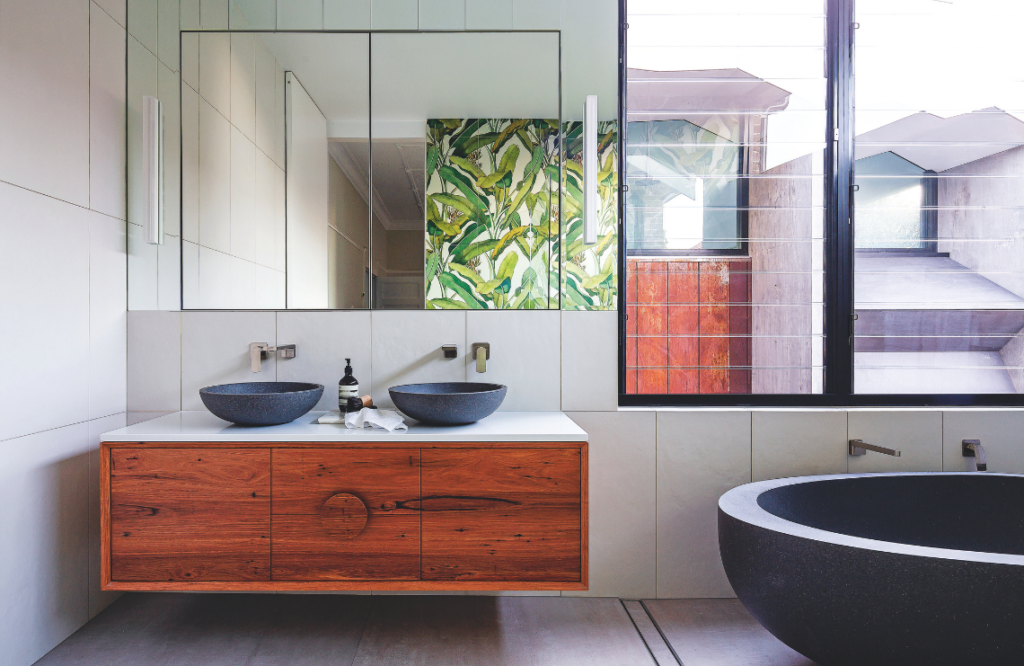
A Showstopping Roofline and Sculptural Spaces
With the home’s orientation to the west, the design prioritizes protection. Deep overhangs, concealed roller blinds, and shading from the sculptural pergola address this need. The home is well insulated, allowing cooling breezes to flow through. Passive heating to the floor slab is augmented by hydronic heating in the cooler months. The design also includes solar panels and a rainwater tank.
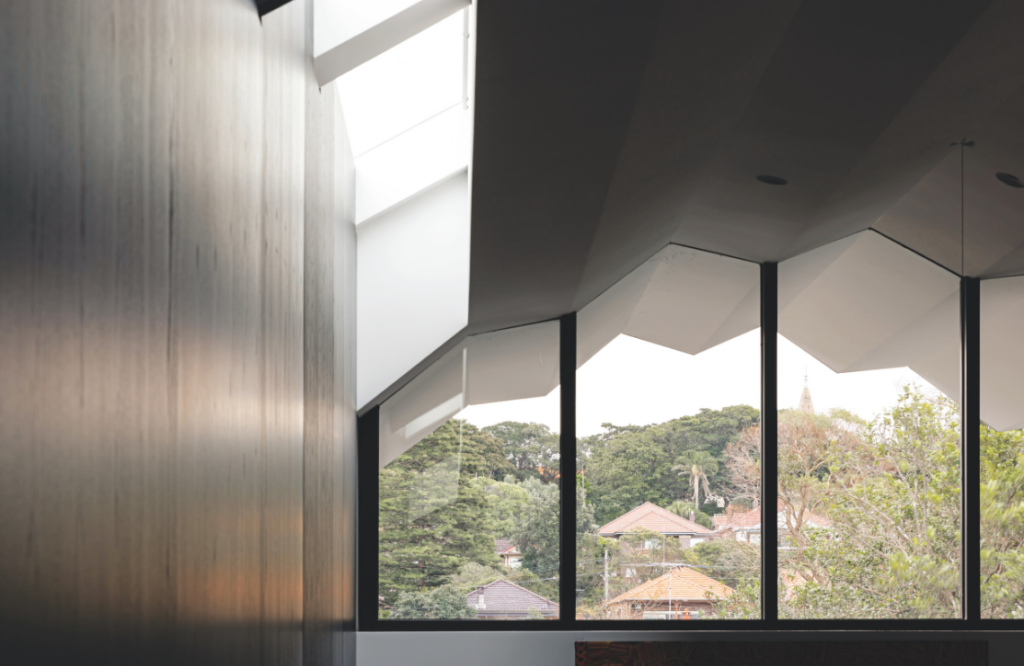
Daniel says that for him, a standout in the project is the use of the blade column as a device to divide the circulation down the central staircase. “It stands as an engaging character in the centre of the space, inviting the occupants to brush by either side, tracing their hand along the sinuous surface,” he shares.

